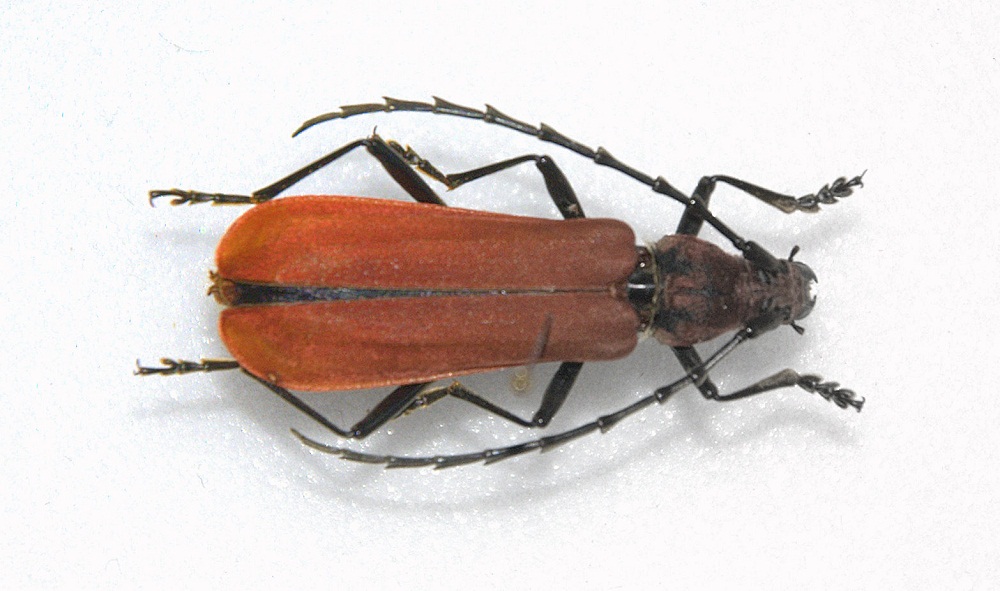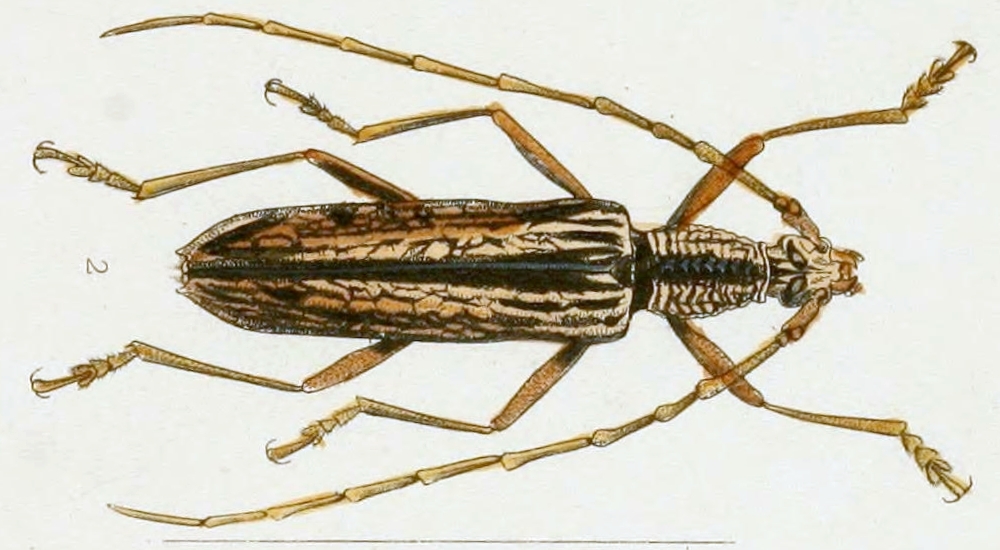| T O P I C R E V I E W |
| Pierre |
Posted - 27/05/2010 : 19:51:21

Black body entirely covered with dense purple red pubescence.
Laos, 26 mm |
| 11 L A T E S T R E P L I E S (Newest First) |
| Pierre |
Posted - 15/12/2015 : 09:12:14
Ah... that's a good news. Thanks Francesco.
Honestly I never could understand which way Mimosebasmia had been defined. |
| Francesco |
Posted - 15/12/2015 : 09:03:17
I have received Lambillionea where Eduard Vives synonymised Mimosebasmia with Gibbocerambyx.
I perfectly agree with him.
Thus, the new name of this species:
Gibbocerambyx purpureus (Pic, 1946). |
| Francesco |
Posted - 19/11/2013 : 15:43:55
I have just received my specimens back, which I had sent to Alexander Miroshnikov for studying the genitalia.
He identified them as Mimosebasmia purpurea, as Vitali (Nagirnyi, not me  ) have still identified them. ) have still identified them. |
| Xavier |
Posted - 06/09/2012 : 19:20:10
I don't find a mention of Mimosebasmia purpurea Pic, 1946 in Gressitt (1951) for China, and in Gressitt & Rondon (1970) for Laos. |
| Vitali |
Posted - 06/09/2012 : 09:08:22
Dear Pierre.
I got this specimen already identified with a bunch of other China beetles years ago.
Yesterday I found also another specimen (unidentified) collected in Laos. That means the description might be in the Gressitt's book.
Could you please check this. I don't have the book. |
| Pierre |
Posted - 06/09/2012 : 08:16:05
Hi Vitali, thank you for this observation!
I recently have seen here and there specimen of this item. All had the same enlarged elytra, which does not fit really well with Gibbocerambyx.
I did not know this genus.
How did you identify your specimen? Or was it already named when you received it? |
| Vitali |
Posted - 05/09/2012 : 23:47:59
In my collection, I found a specimen also from Yunnan, which looks practically identical to yours, Pierre.
It should be Mimosebasmia purpurea Pic, 1946. |
| Francesco |
Posted - 08/06/2011 : 22:06:59

By searching the Zegriades-genotype (see picture), it is clear that most of the species originally inserted or described in this genus have nothing to do with this species, which resembles to Xoanodera.
Consequently, Holzschuh (2010) transferred them (e.g. Zegriades maculicollis) to Gibbocerambyx.
According to me, this red species too belongs to such genus: the elytral base is identical. |
| Pierre |
Posted - 08/06/2011 : 20:49:47
Thank you, Francesco, for this update.
This gives at least a first indication concerning the systematic position of this species. |
| Francesco |
Posted - 07/06/2011 : 08:38:15
I have found a pair of this species coming from Yunnan in eBay and I decided to buy it. I have prepared both specimens and I can confirm that the species is a member of Cerambycini.
The male has antennae hardly longer than body and elytra less enlarged apically, while the elytral base is tuberculed ("höckerartig erhoben").
These features suggest the genus Gibbocerambyx (described from Tonkin) or a closely related genus.
I have seen that Holzschuh considers Zegriades and Gibbocerambyx two different genera; consequently, some species have been transferred from a genus to another. |
| Francesco |
Posted - 03/03/2011 : 20:23:14
Dear Pierre, I have seen the same beetle in a French Forum... the only idea I have is that it is a representative of the tribe Cerambycini, near to Zegriades, but I do not know which. |


